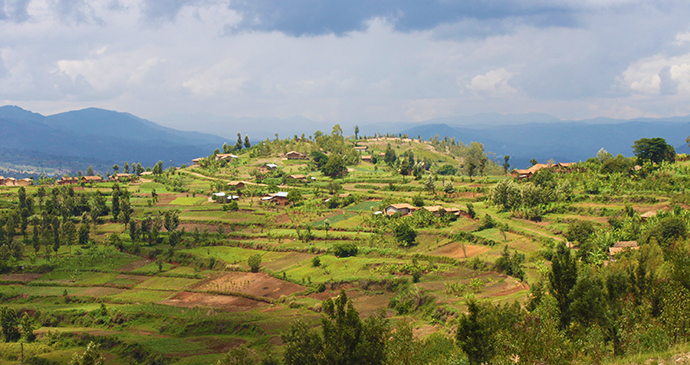Written by Janice Booth
It happened during the reign of Mwami Mibambwe II Sekarongoro II Gisanura, who ruled Rwanda almost four centuries ago. He was a fair and just ruler. Among other innovations, he required his chiefs to bring jars of milk from their own cows to the court – and these were then distributed to the poor and needy, three times a day: morning, noon and evening.
Some chiefs grumbled at this, although they were careful to do so out of earshot of the Mwami; others admired his generosity, and sometimes brought small gifts of vegetables or meat in addition to the milk. Wise and observant as he was, he knew well which chiefs resented his laws, which had true kindness in their hearts and which tended to misuse or misdirect their powers.
One day, so the story goes, a man was convicted of stealing from the Mwami, which was considered a most serious crime. The Mwami called two of his chiefs to the royal court, selecting them carefully, and asked each of them to devise a suitable punishment.
The chief named Mikoranya thought for many days and then scratched a careful diagram on the ground; it represented a shaft of wood extending from a hut, on which the thief would be slowly tortured in full view of the populace. His cries would echo far and wide.
The chief named Kamageri, on the other hand, remembered a large flat rock that lay close to his home place in Ruhango; he proposed to the Mwami that this rock should be heated until it was red hot, and the criminal should then be spread-eagled across it with his wrists and ankles securely tied, so that he roasted to a lingering death. The Mwami then asked the chiefs to demonstrate their ideas, so that he could decide which should be used, and eagerly they set to work.
After much hammering and hauling, the torture rack was in position. Mikoranya refused to pay his labourers, and two of them were whipped when they complained, but grudgingly they finished the task. For a whole week Kamageri’s rock was piled with brushwood fires which were kept burning day and night (some women came under cover of darkness to use the embers for cooking), although those tending the flames were burned and choked by smoke. At last the rock glowed crimson and the heat was unbearable from many yards away.
Paths leading to the area were crammed with people – men come straight from tending their cattle, old women leaning heavily on canes, young women with babies on their backs, scampering children getting under everyone’s feet – all excited to see the spectacle.
The chiefs sent word to the Mwami, and he arrived with his retinue. ‘Is everything ready?’ he asked Kamageri and Mikoranya, and they nodded proudly, expecting praise and possibly some reward. The Mwami called forward his guards, to whom he had already explained what would happen. ‘Take them,’ he ordered. ‘And subject them to the punishments they have devised! Let Kamageri roast on his rock and Mikoranya suffer his own torture. These were cruel men. They took pleasure from brutality. There is no place for such in my kingdom.’
The guards seized the two chiefs and cast them to their fate; and from the watching crowd a great cheer rose into the sky, as the people acknowledged the wisdom and goodness of their ruler. The rock can still be seen today, at Ruhango on the Muhanga–Huye road.
Tourists stop to photograph it and guides recount various versions of the story. And on the blackest nights, when the moon is hidden by cloud and stars cannot pierce the thick velvet of the sky, you may still – if you lift your head to the wind and breathe as lightly as thistledown – smell the faint ashiness of smoke drifting from Kamageri’s ancient fire.
For more on the myths and legends of Rwanda, visit our comprehensive travel guide:

